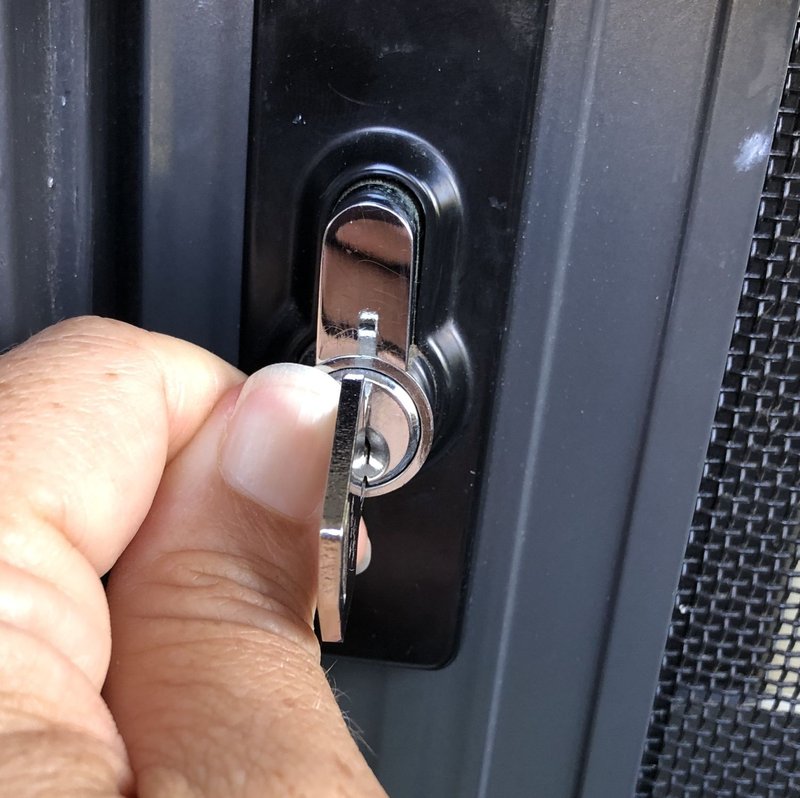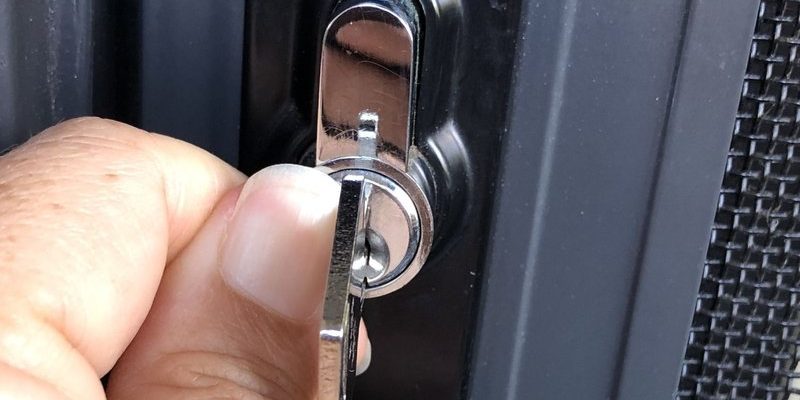
Here’s the thing: a handleset key that pulls out when locked isn’t just odd, it’s actually a real security concern. It means something inside your lock isn’t working the way it should, and it could make your home vulnerable. So, let’s break down why this happens, what causes it in both standard and more modern keyless remotes, and how you can fix it—before you wind up locked out or, worse, with an easily picked door.
How Cylinder Locks Are Supposed to Work
Let me explain what’s actually happening inside your lock, because knowing the basics makes troubleshooting way less intimidating. A standard handleset (from brands like Kwikset, Schlage, Defiant, and others) uses a pin tumbler lock. This means there’s a cylinder inside the lock, packed with spring-loaded pins, and your key pushes these pins into exactly the right position so the cylinder can turn.
The core job of a cylinder lock is simple: the key should NOT come out unless the lock is back in the “neutral” position—usually vertical, not turned. When the door is locked (with the key turned), there’s a small part inside called the retainer or cylinder tailpiece that catches. If everything’s working, you’ll feel a tiny click, and only then can you remove the key.
If you can pull the key out while the lock is engaged, that means something’s off. Maybe the cylinder is worn, maybe a key has been copied poorly, or—this is less common—the original hardware design is faulty. And no, this isn’t normal for reputable brands. Even if your lock uses a smart remote with key backup, the physical part should still hold the key in place unless everything’s lined up.
Main Reasons Your Key Pulls Out When Locked
If you’re wondering, “Is this a big deal?”—yes, it almost always is. When a handleset key pulls out in the locked position, you’re dealing with a mechanical failure. Let’s break down the most common causes:
- Worn Cylinder: Years of use, dust, and grit can wear down the keyway or pins inside the lock, making it sloppy. Sometimes the metal that holds the key in place gets rounded off, so the key no longer “catches.”
- Poor Key Copy: If you used a code or had a key copied at a kiosk that didn’t cut it precisely (or used a worn original), the key’s shape may not match what the lock expects. This throws off the internal alignment.
- Broken or Missing Retainer: The retainer or tailpiece inside the cylinder is what physically prevents the key from sliding out at the wrong moment. If this breaks, all bets are off—your key might pull out whenever you turn it, locked or not.
- Compatibility Issues: If you switched brands, like swapping a Schlage key cylinder into a Kwikset handleset, or added a universal remote lock without checking compatibility, the sizes and catches may not line up.
Honestly, the only time this isn’t a problem is with some specialized locks designed to let you pull out the key in any position. But those are rare, and most homes use standard systems. So if this started after a DIY repair, new battery install, or remote code reset, you might have nudged something out of place.
Why This Is a Big Security Concern
You might be thinking, “Okay, but why does it matter if the key pulls out?” Here’s why it’s risky:
When the key comes out in the wrong position, your lock is literally not doing its job. Anyone who figures this out—or even just gets lucky—can exploit it.
Here are a few scenarios to make it clearer:
- Easy Lock Picking: If the cylinder is loose or the retainer is broken, picking or even “jiggling” the lock becomes way easier. Sometimes, you can even turn the cylinder with almost anything that fits.
- Inconsistent Lock Status: If you’re unsure whether the door is truly locked, because the key was removed halfway or the mechanism slipped, you’re one accidental bump from an unlocked door.
- Remote and Keyless Locks: Even with smart remotes or battery-powered lock systems, the backup key cylinder still needs to function right. If it doesn’t, anyone who knows the trick can bypass your fancy electronics.
Most homeowners think their door locks are “set it and forget it,” but honestly, a lock that lets the key out early is practically advertising that it’s vulnerable. If you care about security (and who doesn’t?), this problem needs attention.
How to Tell If Your Lockset Is Malfunctioning
Not sure if your lock is really at risk? Some problems are obvious, but others are more subtle. Here’s what to watch for:
- Key Removes Smoothly at Wrong Positions: Try turning the key to each position. If you can remove it while the door is locked, that’s a red flag.
- Loose or Wiggly Cylinder: If the cylinder feels like it’s shifting or jiggling as you turn the key, the retaining mechanism might have failed. This is common with old handlesets or after a reset or battery replacement in smart locks.
- Strange Resistance or Crunching Sounds: Any odd grinding, scraping, or resistance you didn’t notice before could mean internal damage.
- Remote Lock Issues: For smart locks with physical key backups, double check that the key works as smoothly as before. Sometimes, re-pairing or sync procedures can nudge something loose inside the mechanical part.
If any of these show up, take a breath. Most problems can be fixed with basic tools and a little patience, but the key is to deal with it sooner rather than later.
Troubleshooting and DIY Fixes for a Slipping Handleset Key
Let me walk you through some steps you can try before calling a locksmith. Here’s how you can troubleshoot and often fix a handleset key that pulls out when locked:
- Check the Key: Try a different copy if you have one. If only one key slips out but a spare works fine, your problem might just be a worn or badly cut key.
- Lubricate the Cylinder: Use a graphite or Teflon-based lock lubricant (never oil) and spray it into the keyway. Work the key gently to free up any sticky pins. This can sometimes reset finicky springs.
- Inspect the Cylinder: Remove the handleset from the door (usually a couple of screws), and take a close look at the cylinder. If you see obvious damage, deep scratches, or loose parts, you’ll likely need to replace it.
- Compare with a Universal Cylinder: If you’re comfortable, try swapping in a universal or brand-compatible cylinder from your local hardware store. That lets you test if the issue is with the cylinder itself or the handleset around it.
Don’t forget: If you’re dealing with a remote keyless lock, check the manual for sync or code reset instructions before digging into the physical parts, just to rule out an electronic glitch.
When to Call a Locksmith (And What They’ll Do)
Sometimes, you’ve done all you can, and the key still slips out when locked. So when’s it time to call in a pro?
- Repeated Failures: If you’ve replaced the key, cleaned the lock, swapped the battery (for remotes), and tried a universal cylinder, but the problem keeps coming back.
- High-Security Locks: If you’re using a Schlage, Medeco, or another brand that advertises high-security features, DIY isn’t always ideal. These locks are built to resist tampering, and forcing them can make things worse.
- Lost or Damaged Parts: If you find missing screws, broken tails, or bits of metal rattling around, call a locksmith. They have the tiny parts and know-how to rebuild or rekey the lock on-site.
A good locksmith will usually diagnose the problem in minutes. They might rekey or replace the cylinder, check for hardware compatibility, or even recommend upgrading to a remote smart lock (with reliable key backup) if yours is out of date.
Comparing Handleset Brands and Designs
Each handleset brand has its own quirks—and some are more susceptible to this key-pull problem than others. Here’s what you should know about some of the biggest names:
- Kwikset: Known for easy rekeying and value, but older models are sometimes prone to cylinder slippage. Modern Kwikset locks (especially with SmartKey tech) usually hold up well, but mis-cut keys can still cause trouble.
- Schlage: Generally very sturdy, but misuse, bad key copies, or low-battery remotes can cause backup cylinder issues. Schlage’s higher-end models have robust retainers—if yours is acting up, it’s likely just worn.
- Yale, Defiant, and Others: Cheaper handlesets sometimes use weaker materials that wear faster. Universal cylinders can be a quick fix, but always check that the retainer matches your handleset’s design.
- Smart and Remote Locks: Features like auto-sync, code resets, and battery changes add convenience—but remember, if the physical key backup isn’t secure, all that tech won’t save you from a mechanical problem!
If your handleset is old or came with your house, it might just be time for an upgrade. Don’t be afraid to compare options at the store, and always test the key in and out before you leave.
How to Prevent This Problem in the Future
Here’s some practical advice to make sure your key doesn’t start pulling out at the wrong time—or ever again:
- Use Only Precision-Cut Keys: Always get your keys cut by a reputable locksmith or at a hardware store with modern machines. Avoid kiosks that scan and print keys from old, worn copies.
- Regular Maintenance: Once or twice a year, lubricate all your locks and handlesets. This helps prevent internal wear and keeps springs working well.
- Replace Before It Fails: If you notice your key is starting to wiggle out, don’t ignore it. The earlier you fix or swap the cylinder, the safer your home stays.
- Update Remote and Smart Locks: If you use a battery-powered or coded remote handleset, follow the instructions for syncing, resetting, or pairing whenever you change codes or batteries—sometimes an incomplete reset can let a problem slip through.
Staying proactive saves you worry later. And let’s be real: most lock maintenance takes less time than making a cup of coffee.
Final Thoughts: Don’t Ignore Handleset Key Problems
It’s tempting to shrug off a loose key—especially if the door’s still “sort of” locking. But honestly, a handleset key that pulls out when locked is your home telling you loud and clear that something’s wrong. Whether you’re using a classic Schlage or a new remote lock with backup keys, the core principle is the same: mechanical reliability is everything.
Take the time to test your locks, fix issues quickly, and don’t hesitate to get help if you need it. A secure door lock isn’t just a piece of hardware—it’s peace of mind, every single day.
